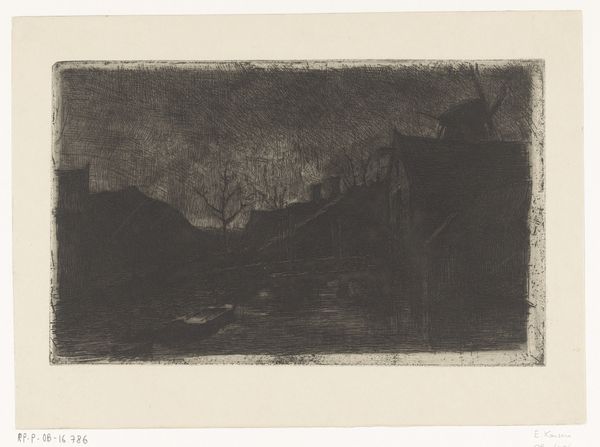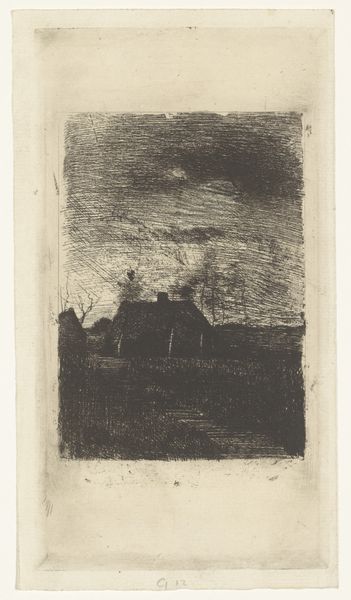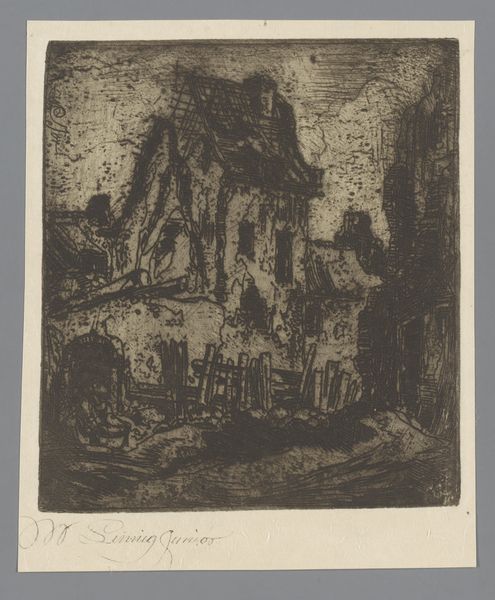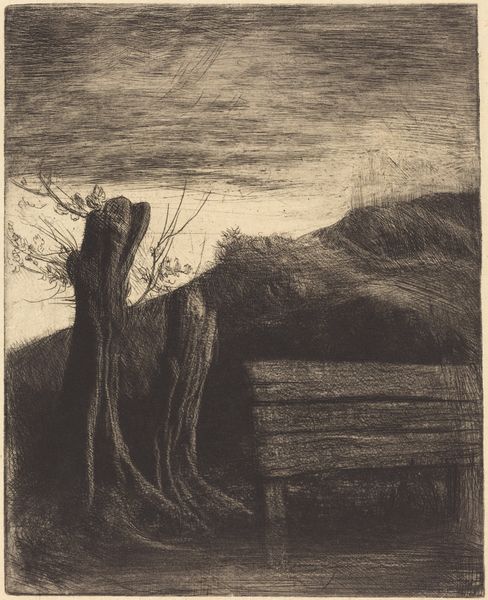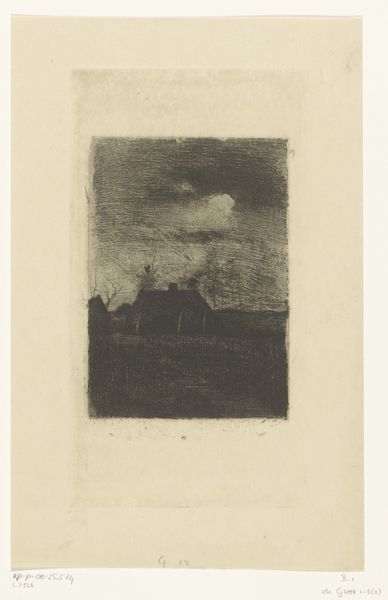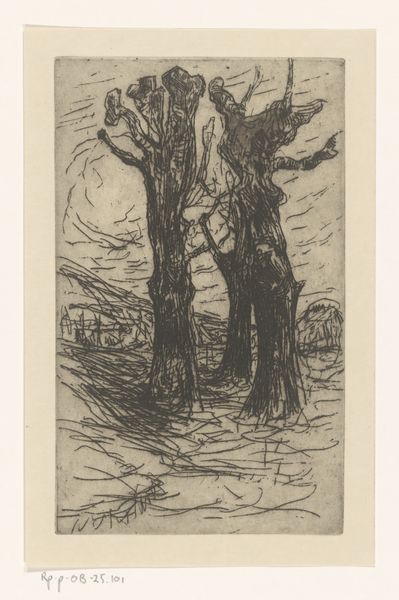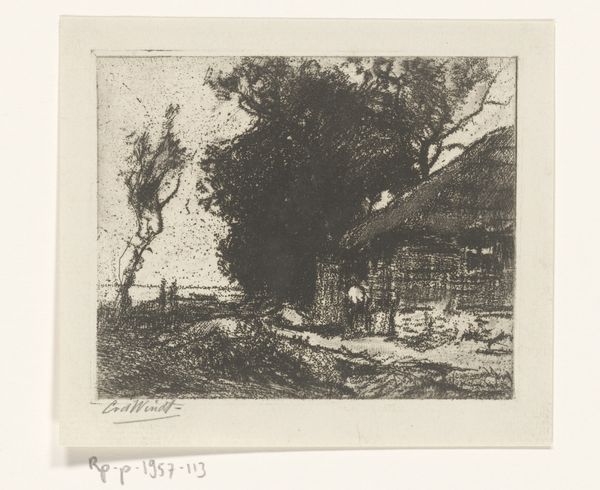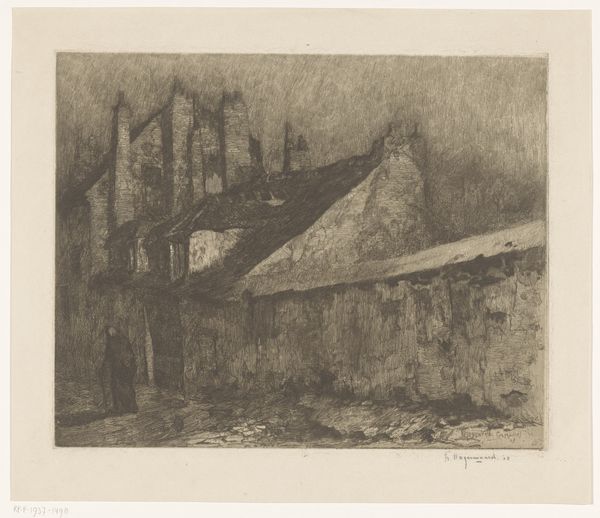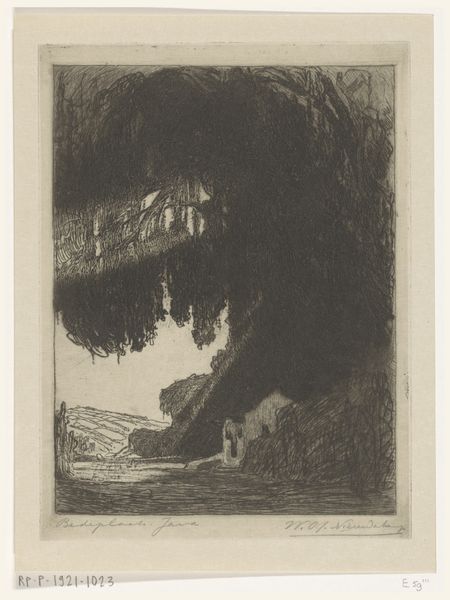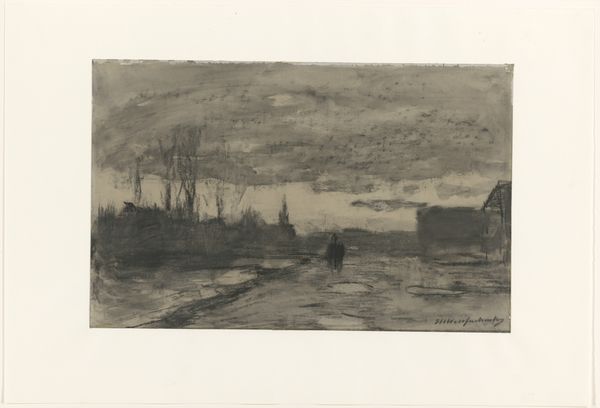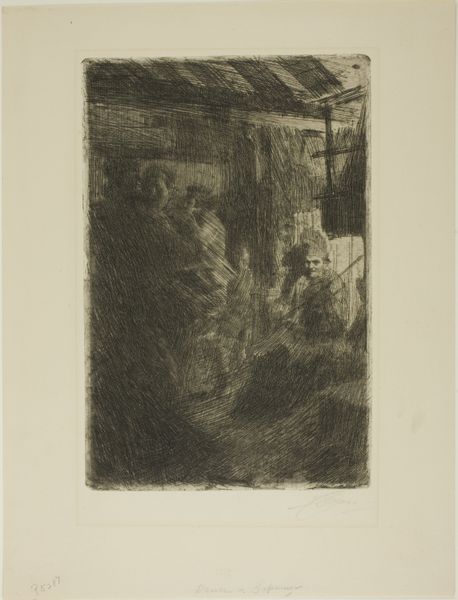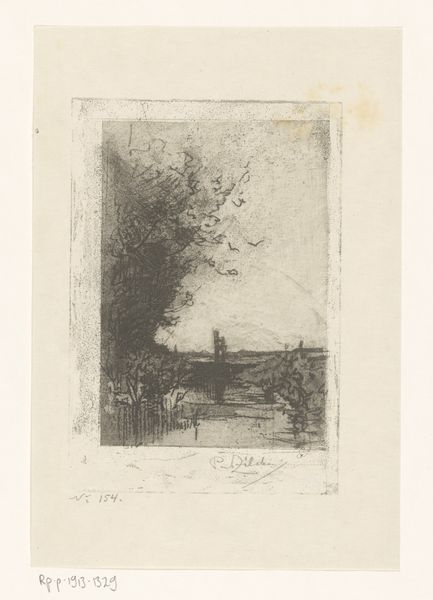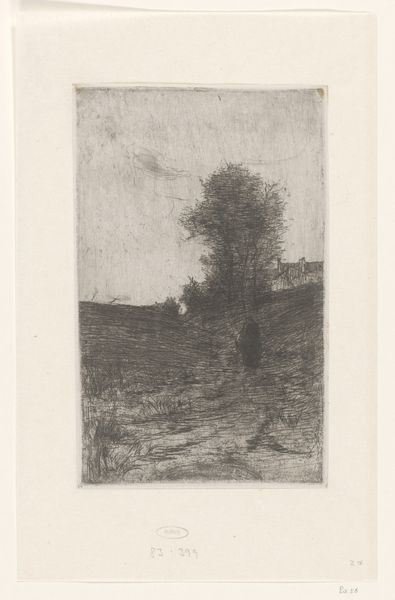
drawing, print, etching
#
pencil drawn
#
drawing
#
natural shape and form
# print
#
impressionism
#
etching
#
old engraving style
#
landscape
Dimensions: height 246 mm, width 199 mm
Copyright: Rijks Museum: Open Domain
Editor: We're looking at Alexis Forel's "View of the Crane on the Quai d'Orsay in Paris," likely created between 1862 and 1913. It appears to be an etching, possessing a somber, almost brooding mood given its monochromatic palette. The textures are really interesting, but what strikes you about the formal composition? Curator: The composition hinges on the interplay of contrasts: light and shadow, organic and geometric forms. Notice how the stark verticality of the crane structure dominates the pictorial space, juxtaposed with the skeletal branches of the tree on the left. The artist directs our gaze using linear perspective, albeit subtle, to emphasize the depth of the Parisian cityscape beyond. Editor: I see that now! It almost feels like the crane and the tree are in a visual conversation with each other. Curator: Precisely. We might consider the lines. Note how Forel uses the etching technique to generate different visual masses, thereby articulating planes of the building with tonal values. Can you see how he employs these tools to construct meaning? Editor: I'm beginning to. Is the texture also significant in any symbolic way, beyond the purely aesthetic? Curator: The texture in the piece may seem superficial; however, Forel has strategically constructed light and shadow to develop and expose dimension. The textural depth, both within the architecture and the sky, contributes significantly to the mood you astutely recognized earlier. Editor: That’s a helpful way to consider texture and form in terms of their interplay. Thanks! Curator: A keen formal analysis always reveals a new perspective on artwork.
Comments
No comments
Be the first to comment and join the conversation on the ultimate creative platform.
